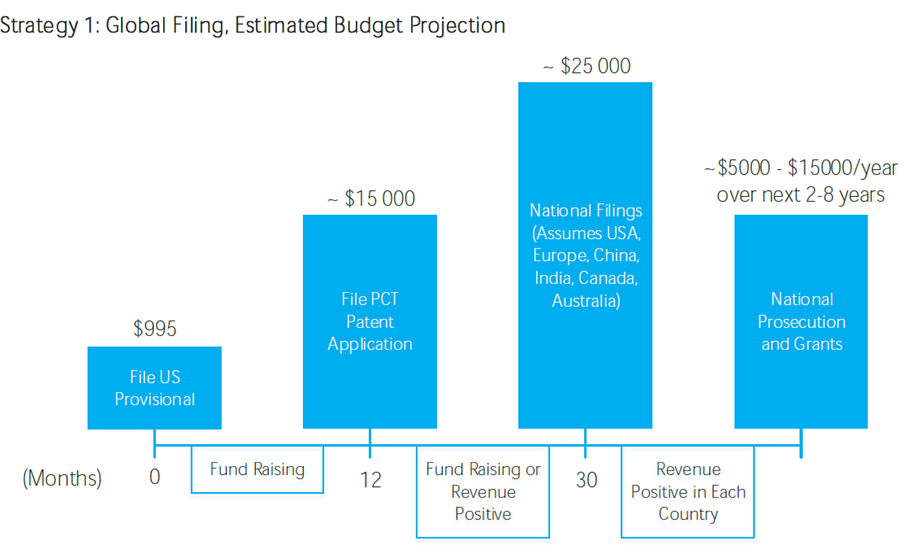
Every tech startup that is looking to patent is faced with their own version of the classic chicken-or-egg problem: “I need investors to pay for a patent, but I need a patent to attract investors.”
The solution, of course, is that a small embryo of a chicken came first — which in patent-speak is what we refer to as a provisional patent application. A provisional patent application is a relatively inexpensive means of getting into the patent system while delaying the major expenditures for a future date when you are better financed to handle the costs.
Being able to accurately forecast patent costs into the future is crucial for any tech startup investing in a provisional patent application. Budgeting must be carefully timed to coincide with the rigid deadlines of the patent system.
We have prepared a guide that outlines the timelines and major spend points for two common patent filing strategies: a global patent filing and a US-only patent filing. The costs indicated in the charts below reflect industry averages for each stage in the patent process.


The first thing one might notice is that a patent does not entail a single, upfront cost. Patent filing costs are spread out over the course of typically 3-8 years, with costs starting low with an initial provisional patent application and escalating as formal patent applications are filed and prosecuted in each jurisdiction of interest.
This staged costing also provides the opportunity for a startup to continually re-evaluate the business case for patent protection in each country and assess their ability to obtain investment or financing.
For example, evaluating the business case for patent protection might play out as follows:
| Day 0: | You file a provisional patent application on speculation that a patent is the best way to protect or monetize your invention. |
| Month 12: | Your provisional patent application bought you 12 months to test market waters, speak to investors, and assess whether a formal patent application is worth the cost, or if that money could be better spent elsewhere. You decide that your invention has international appeal, so you file a formal international patent application. |
| Month 30: | Your international patent application bought you another 18 months to focus on a handful of jurisdictions where patent protection will generate the greatest return on your investment. You file national patent applications in the United States, Canada, the European Union, and China. |
The above example is just one possible patent filing strategy. Consult with a patent professional to determine the patent filing strategy that is most appropriate to your particular startup. Contact a patent professional at PCK to get started.
PCK IP is one of North America’s leading full-service intellectual property firms with offices in Canada and the United States. The firm represents large multinational companies, scaling mid-size companies, and funded innovative start-up entities. PCK IP professionals include seasoned patent and trademark agents, engineers, scientists, biochemists and IP lawyers having experience across a broad range of industries and technologies. Contact us today.
The contents of this article are provided for general information purposes only and do not constitute legal or other professional advice of any kind.